India in Pictures – Mumbai
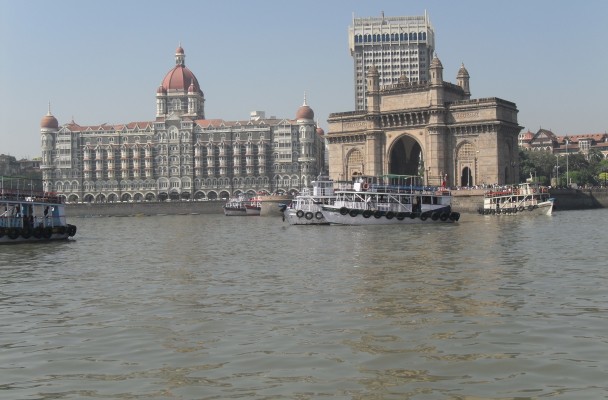
The Geteway of India, the iconic symbol of Mumbai
Gateway of India Built to commemorate the visit of the British Monarchs, King George V and Queen Mary, to India in 1911, it is both the most recognized symbol of Mumbai and a true gateway. Located on the southernmost tip of the city, it is the hub of the tourist’s Mumbai as many of the city’s museums and historic sites, art galleries, upscale stores and restaurants are in the general area.
Pictured next to the Gateway is another symbol, the Taj Mahal Hotel. Badly destroyed in the terrorist attack on Mumbai five years ago, it has since been rebuilt but security is so tight that now the only entrance is through the lobby of the Tower annex and its old grandeur lost to all but residing guests.
Mumbai, previously known as Bombay – the name, Bom Bai, meaning good harbor, given it by the Portuguese – is the largest city in India and the capital of Maharashtra state. The huge metropolis was formed by joining, over the years, seven islands. One of the world’s most populous cities, it currently has a population of 22 million of which an estimated 60% live on the street or in slums – evidence of which is quickly apparent as you move about touring it.
Mumbai is also the financial and commercial capital of India and as the home of Bollywood, the globally-influential Hindi film and TV industries, it is the country’s entertainment center. Marine Drive, built on land reclaimed along the waterfront stretches as a half-moon from the South District known as Colaba, the city’s oldest area at one end and to the posh Malabar Hill, one of the richest neighborhoods where real estate prices are among the highest in the world.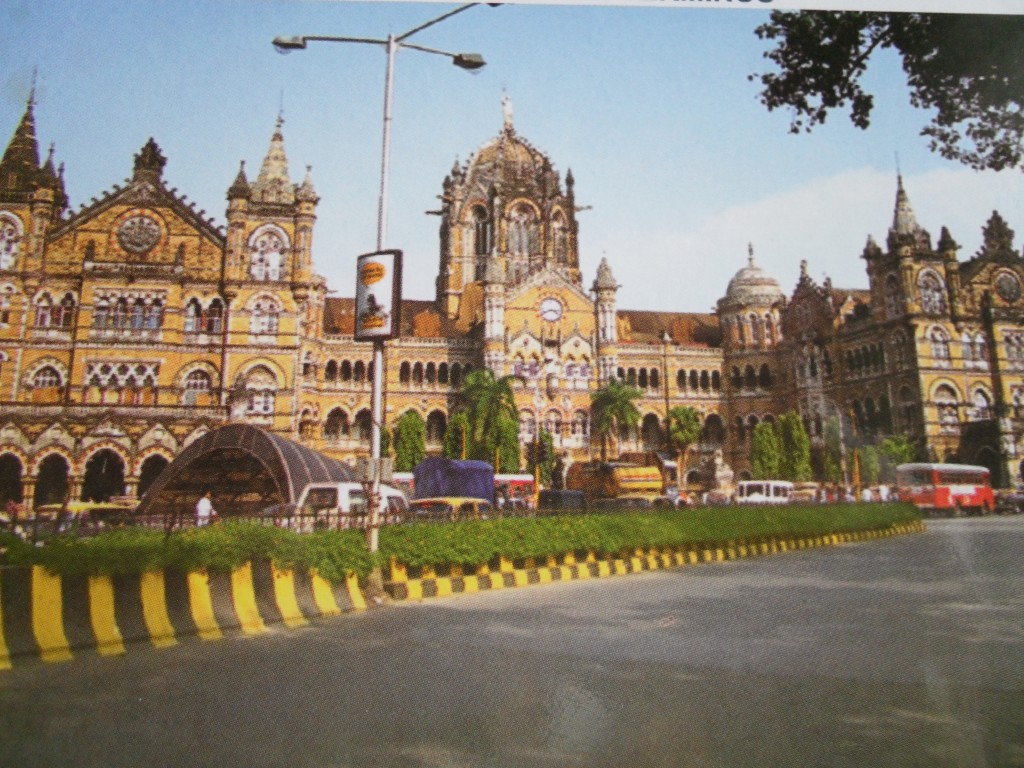
Chhatrapati Shivaji Terminus Another city icon is Chhatrapati Shivaji Terminus, better known to westerners are Victoria Station. The massive Gothic structure houses one of the world’s most complex railway systems that carries six million people in and out of the Mumbai every day. Popularly called CST, it was named to the World Heritage list of Unesco in 2004.
Dabbawallahs Associated with the rails is a Mumbai phenomenon — the daily collection and delivery of lunch boxes for over 220,000 people working in the city with remarkably less than 1% annually, not making their intended destinations . At the Churchgate Railway Terminus you can see the “dabbawallahs of Bombay,” members of the Bombay Union of Tiffin Box Carriers arriving with their boxes and organizing them by intended location. As the only invitees from India for Prince Charles’ wedding, the royals described them as “the symbol of this enigmatic and intriguing city.” Unique to Mumbai, they have been extensively researched by Harvard Business School and French Television and Documentaries, among others.
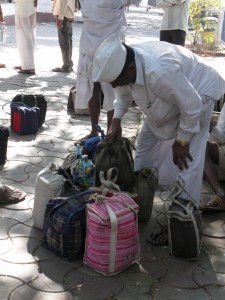 Each morning, about four thousand dabbawallahs collect 30-40 boxes each from suburban housewives who have packed a freshly cooked lunch into small aluminum or similar containers – dabbas. The lunches are likely to be sabze (vegetable curry), dal (lentils), chapattis (Indian bread), and pickle. Each dabbawallah, with his boxes tied on bicycle handlebars, a decorated handcart, or slung over this shoulders, heads to the nearest railway station where he gives his boxes to a fellow dabbawallah who takes them into the city for delivery to a consumer. At a certain time in the afternoon, they collect the boxes and return them to their rightful houses. The dabbawallahs pride themselves on never losing a lunch box. The service, which costs only a few rupees per week, is such a good example of a reliable and efficient system, it leads you to wonder why India can’t apply it to the desperately needed services.
Each morning, about four thousand dabbawallahs collect 30-40 boxes each from suburban housewives who have packed a freshly cooked lunch into small aluminum or similar containers – dabbas. The lunches are likely to be sabze (vegetable curry), dal (lentils), chapattis (Indian bread), and pickle. Each dabbawallah, with his boxes tied on bicycle handlebars, a decorated handcart, or slung over this shoulders, heads to the nearest railway station where he gives his boxes to a fellow dabbawallah who takes them into the city for delivery to a consumer. At a certain time in the afternoon, they collect the boxes and return them to their rightful houses. The dabbawallahs pride themselves on never losing a lunch box. The service, which costs only a few rupees per week, is such a good example of a reliable and efficient system, it leads you to wonder why India can’t apply it to the desperately needed services.
Babulnath At the end of Marine Drive and located on the eastern slope of the Malabar Hill is an original shrine of 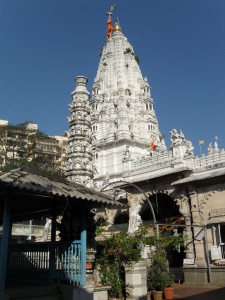 the city, built in about 1780 and enlarged in the 1830’s. Dedicated to the god Shiva, preserver, destroyer and most powerful in the Hindu trinity, the temple known as Babulnath and is thronged by devotees on Monday and during auspicious occasions.
the city, built in about 1780 and enlarged in the 1830’s. Dedicated to the god Shiva, preserver, destroyer and most powerful in the Hindu trinity, the temple known as Babulnath and is thronged by devotees on Monday and during auspicious occasions.
Khotachi Wadi Hidden in the alleyways of the city’s old section is the small enclave with houses of 19th century architecture that the Khotachi Wadi community, headed by James Ferrari, a local fashion designer, is trying to save against the onslaught of real estate 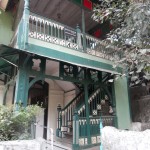 development. To raise money for the group, Ferrari works with some local tour companies to bring visitors to his modest, 150 year old home. In the parlor, we were greeted by Ferrari who explained the group’s mission. Out of about 60 such dwellings, only 20 remain. Several of his staff showed us how to tie a sari and served tea. You need a guide to find the location and walk along narrow streets of the old cottages.
development. To raise money for the group, Ferrari works with some local tour companies to bring visitors to his modest, 150 year old home. In the parlor, we were greeted by Ferrari who explained the group’s mission. Out of about 60 such dwellings, only 20 remain. Several of his staff showed us how to tie a sari and served tea. You need a guide to find the location and walk along narrow streets of the old cottages.
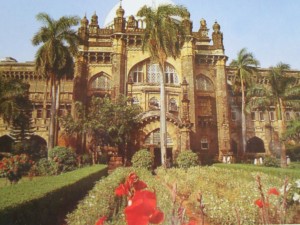 Chatrapati Shivaji Vastu Sangrahalay Formerly known as the Prince of Wales Museum, it was built in 1905 to mark the visit to India of King George V as Prince of Wales who laid the foundation stone. The imposing building’s main attraction is a collection of over 2,000 miniature paintings from the different art schools of India.
Chatrapati Shivaji Vastu Sangrahalay Formerly known as the Prince of Wales Museum, it was built in 1905 to mark the visit to India of King George V as Prince of Wales who laid the foundation stone. The imposing building’s main attraction is a collection of over 2,000 miniature paintings from the different art schools of India.
Traffic Forever No matter where you go in Mumbai, the streets are always crowded with people and vehicles and motorcycles darting in and out, along with a symphony of horns which, nonetheless, seem useless. It takes getting from one location to another in this city of narrow streets and 22 million 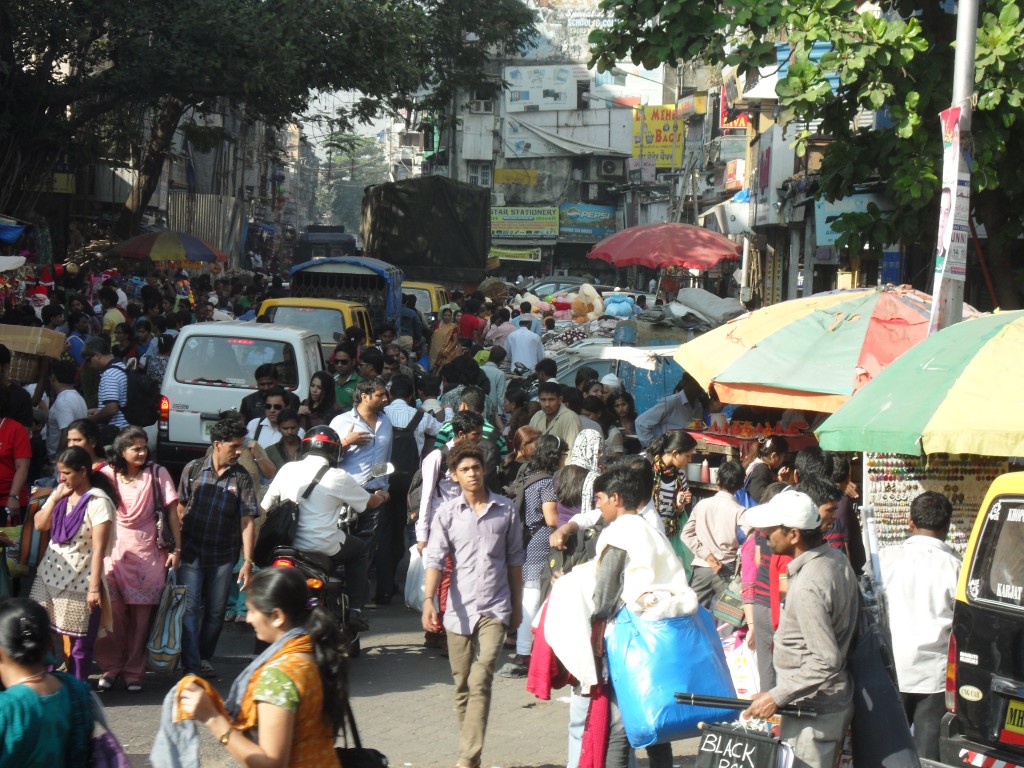 people, an exercise in patience and perseverance.
people, an exercise in patience and perseverance.
Crawford Market Named after Bombay’s first municipal commissioner, Arthur Crawford, the market is situated between what was once the British fort and the local town. Its façade is a blend of Flemish and Norman architecture, with a bas-relief above its main entrance depicting Indian peasants in wheat fields. It was designed by Lockyard Kipling, the father of Rudyard Kipling; the Kipling cottage still stands in the market to this day. As Mumbai’s main wholesale market, you see mountains of fresh fruit and vegetables and hundreds of people buying and bargaining.
Dr. Bhau Daji Lad Museum Formerly known as the Victoria and Albert Museum, it is the oldest museum in Mumbai opened in 1872 with a collection from an earlier location dating from 1857. The museum’s name was changed in 1975 in honor of the man who headed its restoration and whose vision and dedication saved the collection. The museum’s exhibits traces the story of Mumbai and its development in the 18th, 19th and early 20th century. The museum received the UNESCO award of Excellence for Conservation in 2005. Hours: 10 a.m. to 5:30 p.m.
No matter where you look, the massive poverty in Mumbai is too evident to ignore.
By Kay Showker, at sea in the Indian Ocean on Oceania Cruises’ Nautica.
Next in INDIA IN PICTURES – Elephanta Island, A World Heritage Monument

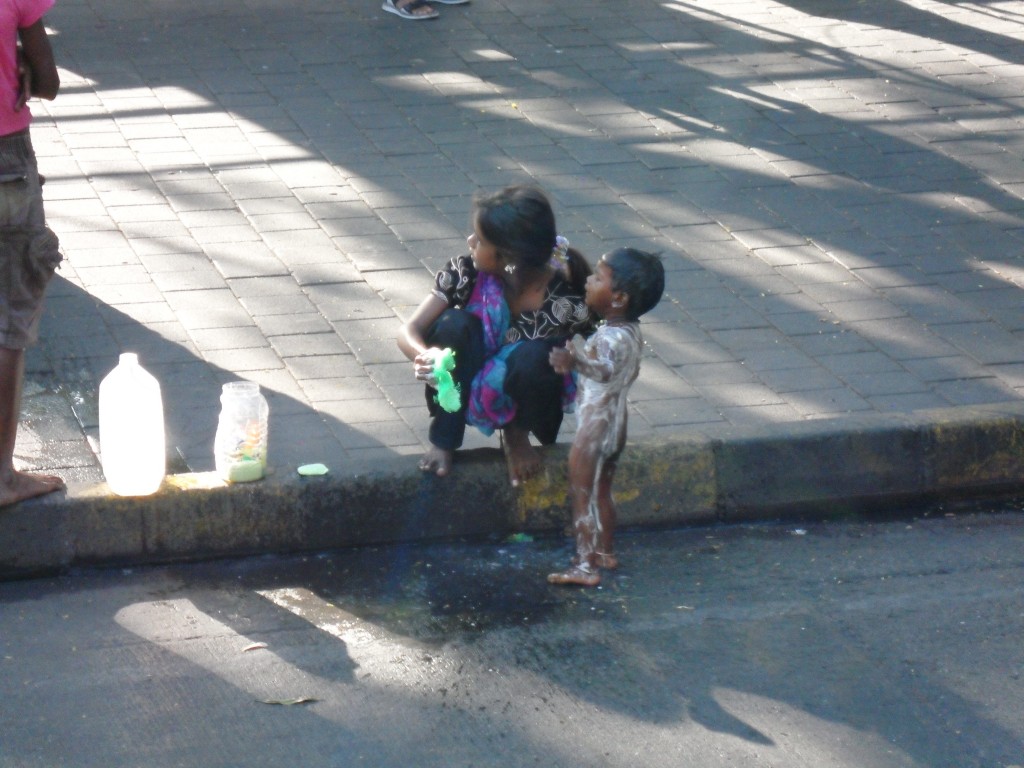
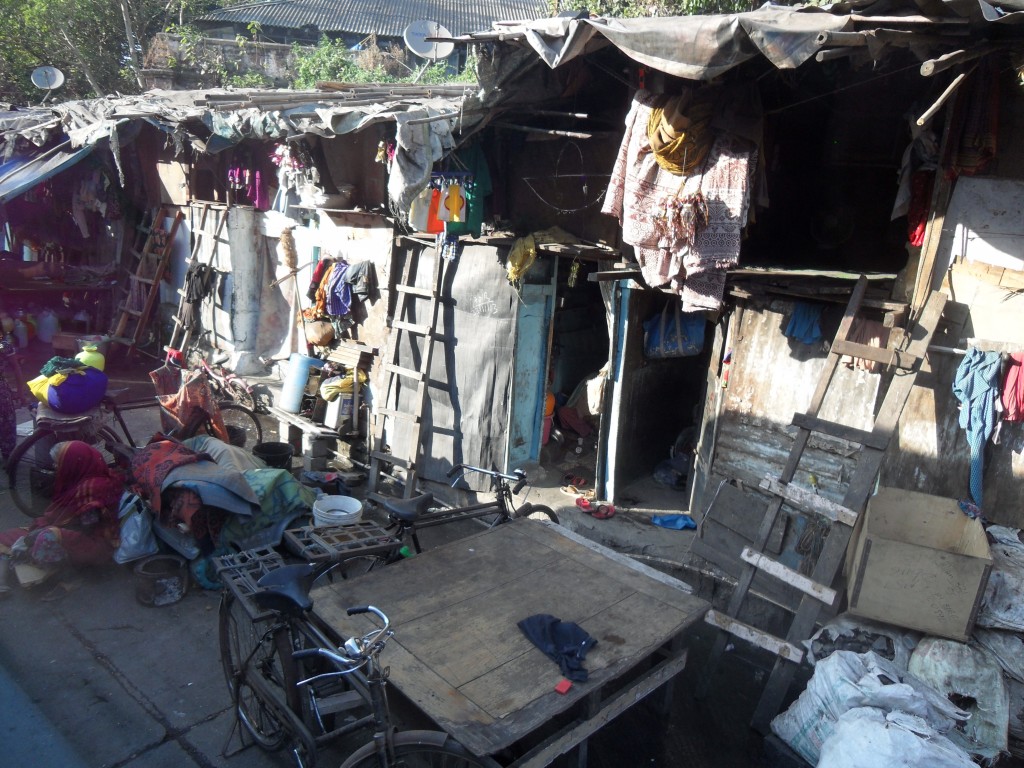
Leave a Reply